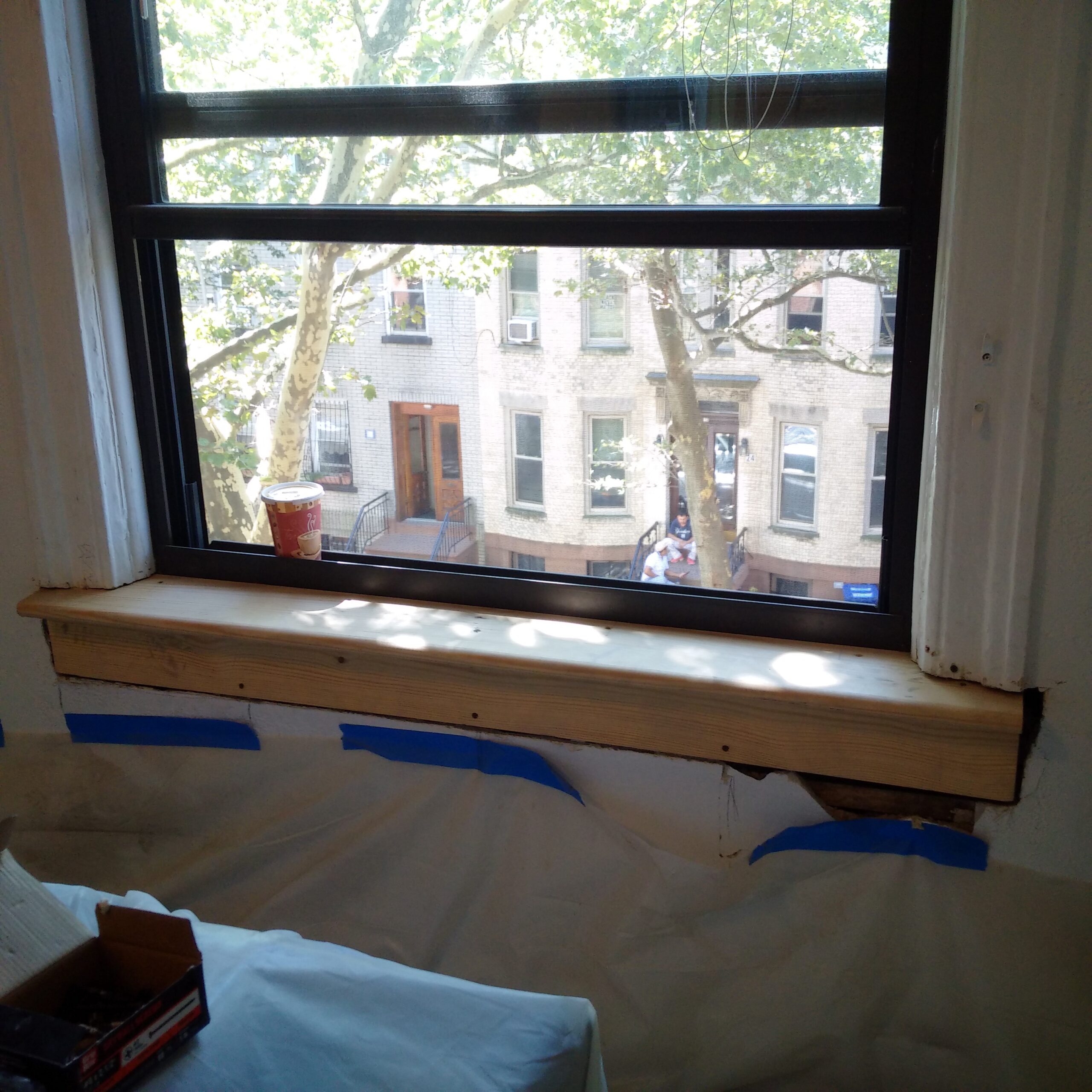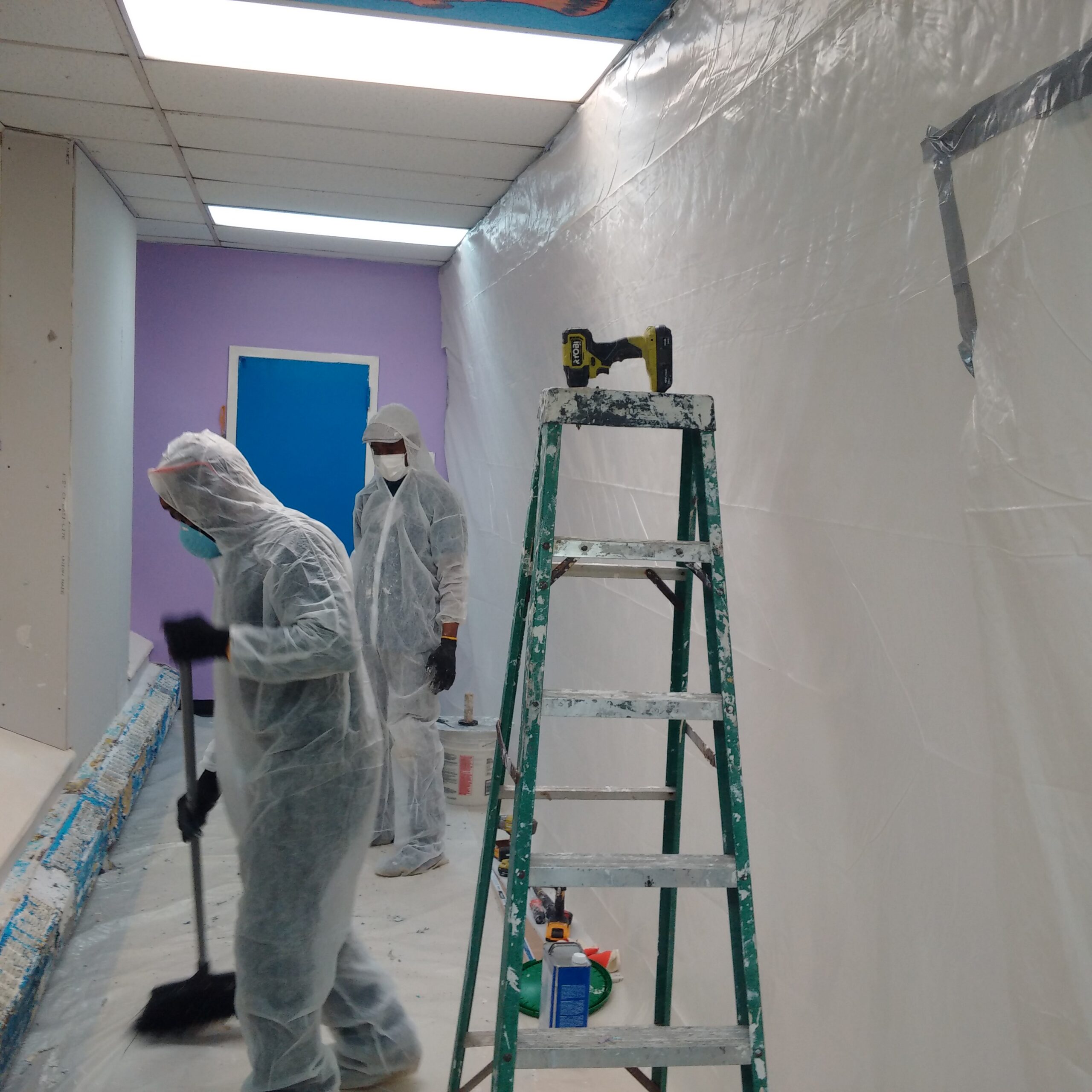Lead Paint Removal Service-- NYC's Trusted Solutions for Lead Safety
Lead Paint Removal Service-- NYC's Trusted Solutions for Lead Safety
Blog Article
Best Practices for Ensuring Safe and Comprehensive Lead Infraction Reduction
Attending to lead violation abatement needs a multi-faceted method to make certain both security and compliance. It's the final clearance procedure, including extensive inspections and research laboratory screening, that genuinely verifies a lead-free environment, making certain lasting safety and security. Exactly how do these methods interconnect to ensure detailed lead abatement?

Preliminary Analysis
Conducting a preliminary evaluation is an essential very first action in lead violation reduction. This stage includes a thorough evaluation of the home to recognize the visibility, extent, and specific areas of lead-based threats. Qualified experts, such as licensed lead examiners or risk assessors, ought to perform a comprehensive site assessment, using tools like X-ray fluorescence (XRF) analyzers to accurately detect and measure lead concentrations in paint, dust, soil, and water.
The analysis must additionally include an evaluation of the building's background, previous records, and any kind of problems or health and wellness concerns reported by residents - Lead Removal Contractors. Recording the findings diligently is necessary, as these documents develop the basis for establishing an efficient reduction approach. A thorough analysis additionally includes sampling and lab analysis, which are crucial to verify the visibility of lead and guide succeeding actions
In addition, it is necessary to connect the outcomes transparently to all stakeholders, including homeowner, tenants, and regulatory authorities. By guaranteeing that the preliminary analysis is carried out with precision and roughness, specialists can lay a strong foundation for a targeted and efficient lead reduction procedure, eventually securing public health and making sure conformity with regulative criteria.
Correct Control
Appropriate containment is vital to stop the spread of lead contaminants during abatement tasks. Efficiently handling containment minimizes the danger of lead dirt and particles migrating to non-work locations, thus securing both the setting and individuals outside the immediate job area. To achieve proper containment, an impermeable barrier of plastic bed linen should be established around the workspace, making certain all joints and edges are securely sealed. Lead Removal Contractors. This obstacle must extend from floor to ceiling and be taped to stop any leaks.

Routine evaluations of the control area are needed to look for breaches or weak points in the barrier. Any recognized issues ought to be immediately addressed to maintain the honesty of the containment. By sticking to these techniques, abatement projects can efficiently control lead contamination and alleviate affiliated Continue wellness risks.
Employee Security
Making certain employee protection is critical throughout lead abatement tasks to stop occupational exposure to harmful lead fragments. Essential procedures include the usage of individual safety devices (PPE) such as respirators, handwear covers, and full-body fits specifically developed to obstruct lead dust and fumes. Workers need to go through thorough training on the proper use and upkeep of PPE, consisting of healthy screening for respirators to make sure maximum efficiency.
Design controls, such as local exhaust air flow systems, are critical in minimizing air-borne lead concentrations in the workplace. Management controls need to also be executed, including limiting the duration of direct exposure and rotating employees to reduce private direct exposure times. Routine clinical surveillance and biological tracking are crucial for very early detection of lead absorption, making it possible for timely intervention and therapy.
Furthermore, developing a decontamination method is vital. Workers should comply with stringent decontamination treatments before breaks and at the end of their change to avoid lead dirt from being lugged outside the work location. This includes thorough hand and face cleaning with lead-specific cleaning representatives and changing out of infected clothing.
Careful Clean-up
Keeping a safe job setting expands past employee defense and encompasses meticulous cleanup to guarantee lead fragments are completely gotten rid of from the site. The process of thorough cleanup is vital in preventing the recontamination of the moderated area and securing both current and future occupants.
To achieve a comprehensive clean-up, all workplace must be methodically decontaminated. This entails making use of specialized HEPA (High-Efficiency Particulate Air) hoover and wet-wiping methods to catch and remove fine lead dirt that might have decided on surface areas. It is imperative to cleanse all horizontal surface areas, consisting of floorings, home window sills, and kitchen counters, in addition to upright surfaces that may have trapped lead particles.
Workers must put on suitable individual safety tools (PPE) during clean-up to avoid direct you could try here exposure to residual lead dirt. Utilized cleansing materials such as wipes, sponges, and mop heads ought to be gotten rid of based on dangerous waste disposal laws.

Last Clearance
Final clearance is the critical concluding stage of lead reduction that determines whether the site is risk-free for reoccupation. This important step includes thorough evaluation and screening to validate that all lead hazards have been properly removed.

Last clearance screening not only shields future occupants however also makes sure compliance with local, state, and federal guidelines. Furthermore, it functions as a recorded recognition of the reduction specialist's adherence to market best methods. Guaranteeing a comprehensive and effective final clearance is crucial in guarding public health and wellness and cultivating trust in the reduction process.
Conclusion
Making certain risk-free and complete lead violation abatement demands a multifaceted approach incorporating preliminary analyses with advanced discovery approaches, reliable containment strategies, stringent worker protection procedures, and precise cleanup procedures. The final clearance phase, including thorough evaluations and laboratory testing, is important to confirm compliance with EPA standards. Adherence to these finest practices assures a risk-free environment for residents, alleviates health risks, and supports regulatory needs, thereby promoting public wellness and safety in lead-affected areas.
Report this page